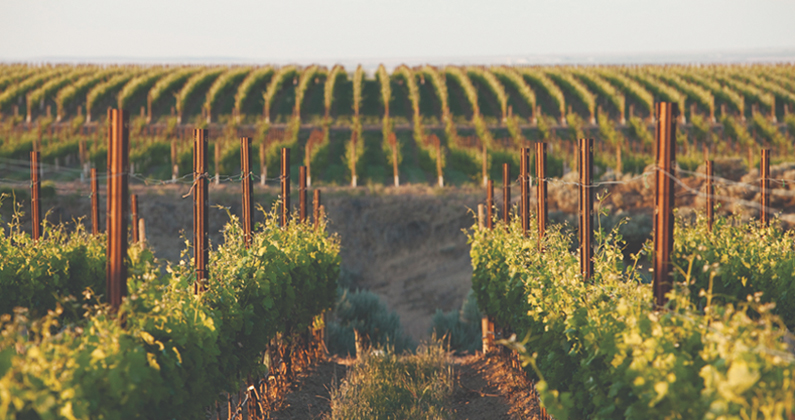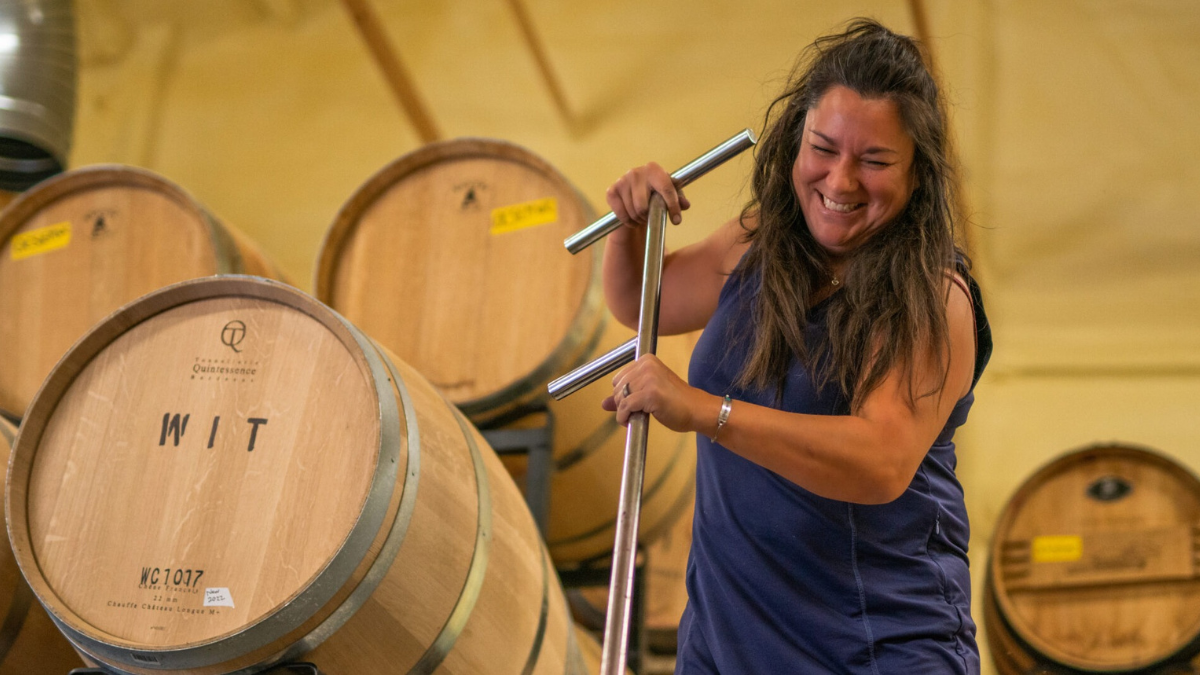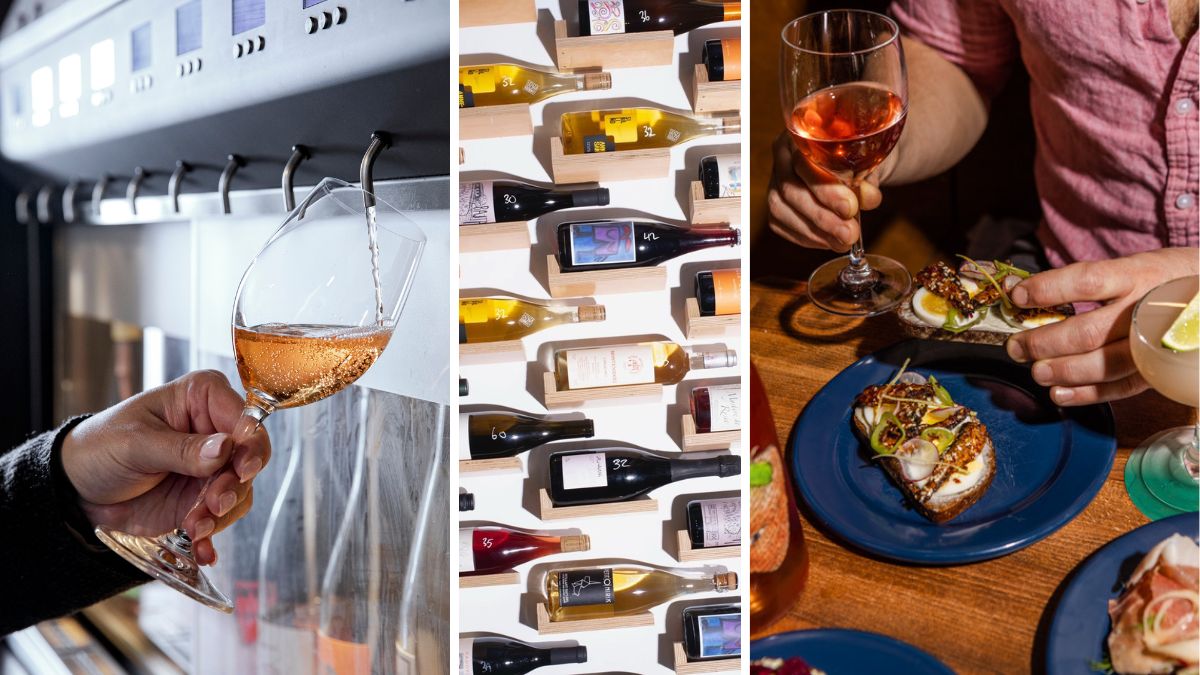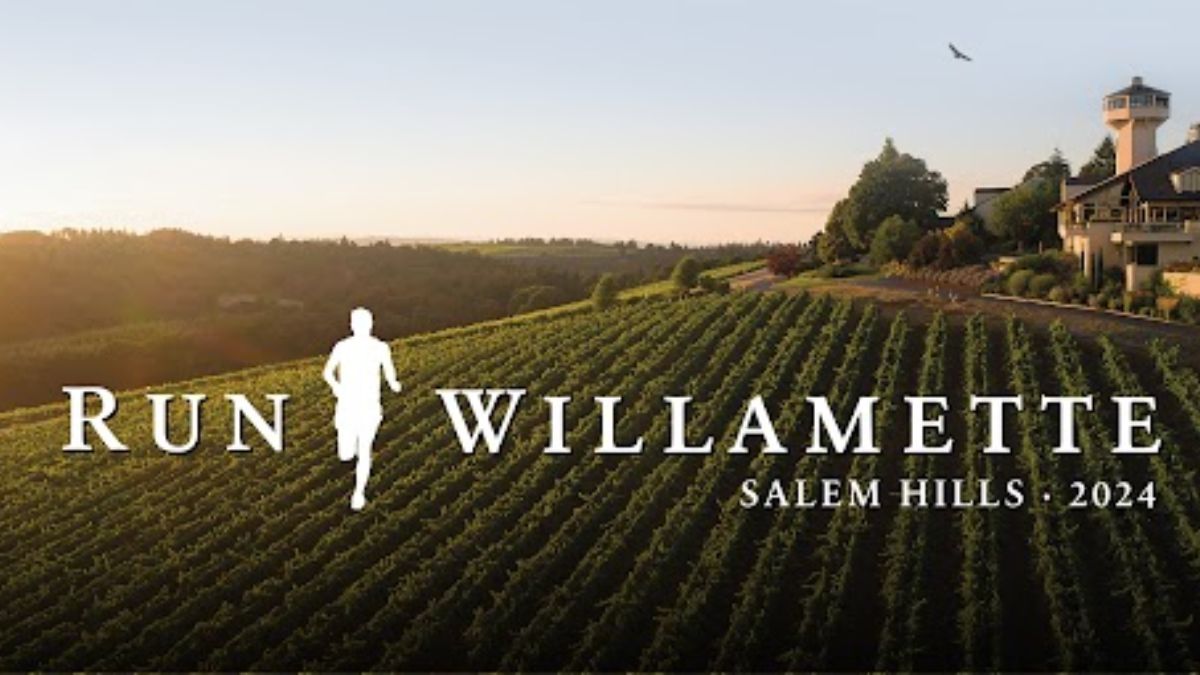In the heart of Eastern Washington wine country, alongside the rolling Columbia River, sits two tightly packed crop circles. Here, in the Horse Heaven Hills, this 90-acre vineyard has two ravines that run through it giving the winery its name, Double Canyon.
Since the beginning, Double Canyon honed in on one thing — making world-class Cabernet Sauvignon. Winemaker Kate Michaud came on board in 2017, with the new state-of-the-art winery in Richland, Washington, and explains that the vineyard was planted in two crop circles in a strategic manner.
“You get lots of fruit per vine which would then translate to more concentrated fruit and smaller berries, so you’re getting more skin material proportionally to the pulp inside,” she explains. “The pulp inside is just sugar and water but the skin is where you get all the color and tannin so that’s kind of the material we feel as winemakers is important to work with.”
The high-density planting of the vineyard is just one of the ways that Double Canyon ensures the wine is at the top-of-the-line for Washington.
“I’ve been making wine for 19 years now and unequivocally I can say [Double Canyon] is the easiest place to make wine,” Michaud says.
Before the Richland facility was finished, she was working across the street at online retailer Naked Wines and watched as the new building was erected. She called to see if they were hiring a winemaker. The desire was mutual: Double Canyon had reached out to her before the facility was finished but the timing wasn’t right — now it was.
The payoff for waiting was a facility capable of producing up to 50,000 cases. California-based Crimson Wine Group, Double Canyon’s parent company, drew on the feedback of its other winemakers for what to put into the winery. One of the many features of the facility is the winery’s lab, where the team can run phenolic analysis — which provides them with a snapshot of the grape’s raw material, if tannins are high or low, if there are unripe seeds or potential color problems, and so forth — making sure they’re getting the most out of their grapes they can.
“Your gut instinct to this is probably correct, like if I’m working with 20 different blocks of Cab over five different vineyards, probably the one that you think is the darkest is the darkest,” Michaud says of the lab’s analysis abilities. “But to know empirically [from the lab] and then to be like, ‘this block, in particular, has consistently given us low numbers but I really like the flavors or I don’t.’ It allows you to move forward… it’s just kind of one more tool in your box of analysis.”
Double Canyon is the first winery for Michaud that explicitly directed her to focus on one thing: Cabernet Sauvignon. Whereas she had been making an array of varietals like Riesling, Sauvignon Blanc, Chardonnay, the usual suspects, before at wineries like David Bruce Winery in California and Canoe Ridge in Walla Walla.
The winemaker sees this hyper-focus as one of Crimson’s many strengths. “I think Crimson has been pretty good at saying, ‘we’re actually going to be kind of a string of pearls company and not cannibalize each other,’” she adds.
Rather than having six different Cabernets for the Crimson sales force to go out with, each winery under the group umbrella — including other Northwest greats like Willamette Valley’s Archery Summit and Walla Walla Valley’s Seven Hills Winery — is producing a product that is what they are known for.
“Everything just feels like they’re being deliberate in their choices and I kind of like it,” Michaud says. “I feel like less is more.”






